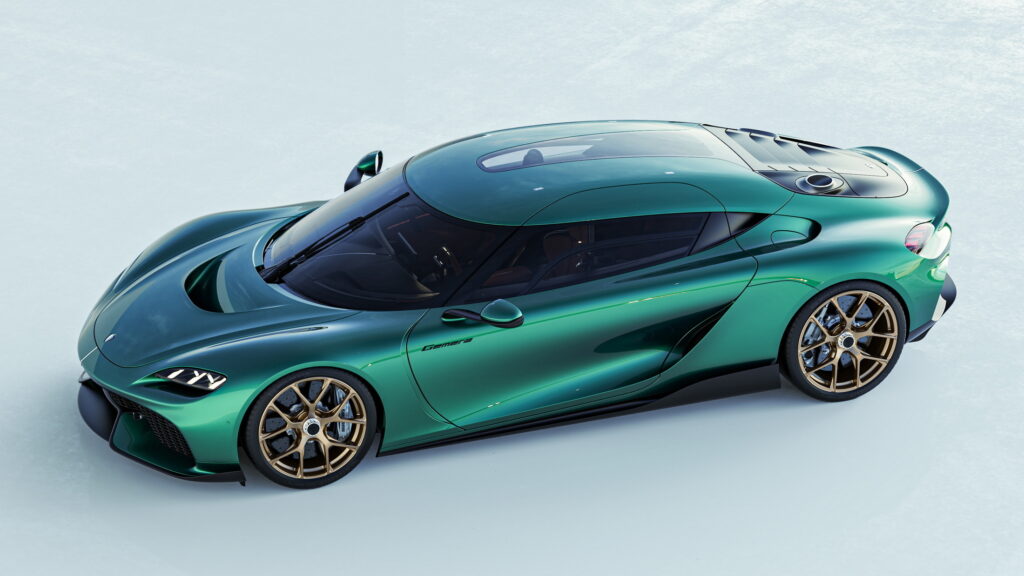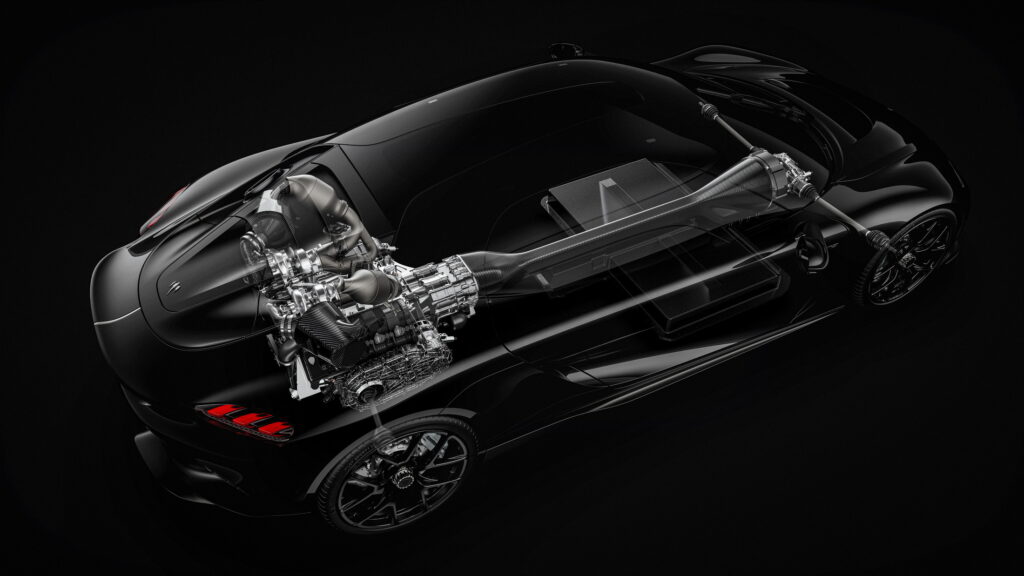The Koenigsegg Gemera’s electric motor will be able to power all four of its wheels, and so will the engine thanks to a staggering number of clutch packs
July 30, 2023 at 11:20
 –>
–> 
–>
Earlier this month, Koenigsegg announced that it would be making a few changes to its upcoming four-seater, the Gemera. While the insane 2,300 hp (1,715 kW/2,332 PS) figure made all of the headlines, there were some other tidbits that were of a more technical, but still interesting, nature.
As highlighted in a video by the Engineering Explained YouTube channel, the company’s owner, Christian von Koenigsegg, said that in addition to receiving a V8 engine option, the plug-in hybrid Gemera will also be able to power all four wheels with either powertrain.
That’s a pretty technical concept, but when you stop to think about it, it’s actually pretty neat. In theory, that means that either the electric motor or the engine can power all of the wheels. In practice, that will likely mean extremely precise torque vectoring for cornering performance that’s as insane as the Gemera’s horsepower figures.
advertisement scroll to continue
Read: $400,000 V8 Option From Jesko Will Reportedly Give Koenigsegg Gemera 2,300 HP

Thanks to a lot of digging through patent documents, Engineering Explained’s Jason Fenske lays out how the system will work over the course of a 14-minute video. However, put simply, it involves a whole heck of a lot of clutch packs.
Effectively, both the engine and motor can send power either forward or backward. Meanwhile, a quintet of clutches will manage the power output to each wheel, and will effectively allow each to bypass the other, if need be. Although it’s at the front of the car, that means that the electric motor can power either the front or the rear wheels. Same goes for the engine (whether you choose the three cylinder or the eight).
That means that the power unit has been simplified somewhat, as compared to what Koenigsegg initially planned. Back in 2020, its plan for the Gemera was to fit three motors at the back of the car, and have two clutch packs at the front handling torque vectoring. While the new system adds a lot of clutch packs, it means fewer motors, which may explain how the automaker managed to fit the V8 in it (though it did still require some massaging).
We’ll have to wait until Koenigsegg lets outsiders drive the Gemera before we know if the system works on the road, but for now it’s all part of the mad scientist engineering that has defined Koenigsegg and earned it a place in the supercar pantheon.
[embedded content]


